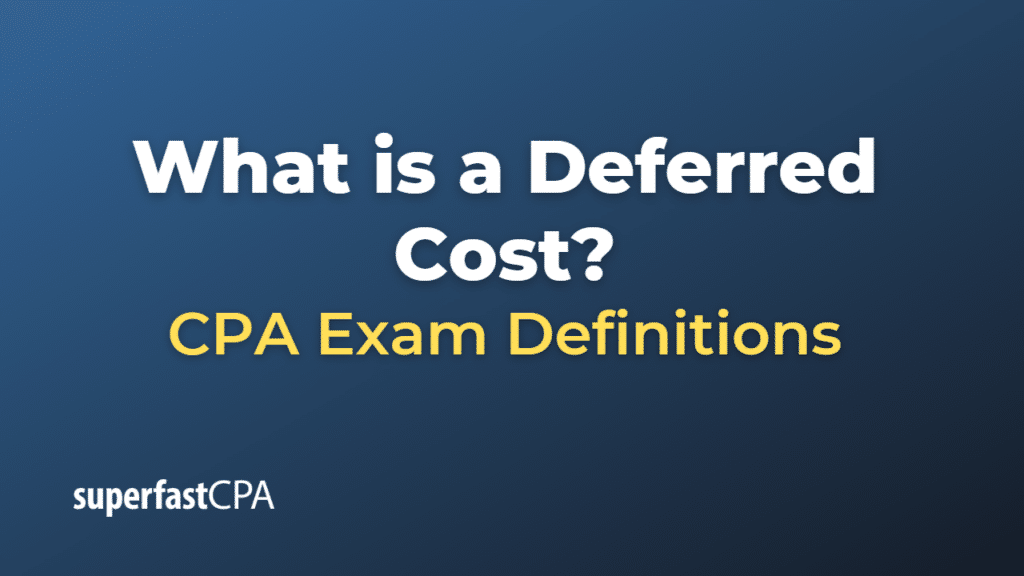Deferred Cost
A deferred cost, also known as a deferred expense or prepaid expense, refers to a cost that has already been incurred, but it is not expensed until later accounting periods. This happens because the cost is expected to provide economic benefits over multiple periods in the future.
Deferred costs are listed as assets on a company’s balance sheet because they represent future benefits that the company will realize. They are considered current assets if the benefits will be realized within one year and non-current (or long-term) assets if the benefits extend beyond one year.
One common example of a deferred cost is insurance premiums. For example, if a company pays $12,000 in January for an insurance policy that provides coverage for the entire year, the company would initially record the $12,000 as a deferred cost (or prepaid expense) on its balance sheet. Then, each month, the company would recognize $1,000 of the insurance expense on its income statement and reduce the deferred cost by $1,000 on its balance sheet.
This process ensures that the company’s financial statements accurately reflect the timing and amount of its insurance expense, in accordance with the accrual basis of accounting and the matching principle.
Example of a Deferred Cost
Let’s consider a simple example involving insurance premiums, a common type of deferred cost.
Suppose a company pays an insurance premium of $12,000 on January 1 to cover the entire year. This cost is a deferred cost, or prepaid expense, because it provides benefits that extend over multiple periods in the future.
Here’s how the company would record this transaction in its accounting records:
On January 1: The company would decrease (debit) its cash account by $12,000 to reflect the payment. At the same time, it would increase (debit) its Prepaid Insurance account (a current asset account) by $12,000 to reflect the future benefit it will receive from the insurance coverage.
The journal entry would look like this:
- Debit Prepaid Insurance $12,000
- Credit Cash $12,000
Each Month Throughout the Year: Each month, the company would recognize a portion of the insurance expense and reduce its Prepaid Insurance account accordingly. Since the insurance coverage extends over 12 months, the company would recognize $1,000 of insurance expense each month ($12,000 / 12 months).
The monthly journal entry would look like this:
- Debit Insurance Expense $1,000
- Credit Prepaid Insurance $1,000
By the end of the year, the entire $12,000 would have been recognized as insurance expense on the company’s income statement, and the balance in the Prepaid Insurance account would be $0, reflecting the fact that the benefit of the insurance coverage has been fully utilized.













